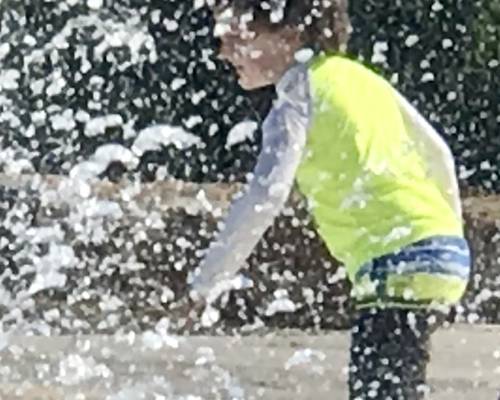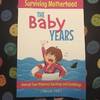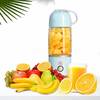Drought Safety:What exactly is drought & Ways to conserve water

Drought is a shortage of water over an extended period of time. Droughts are a normal part of a climate cycle. They occur in all climate zones. Drought can be short or span years. There have been at least three major U.S. droughts in the last 100 years. Two of these, the 1930s Dust Bowl drought and the 1950s drought, each lasted 5-7 seven years and covered large areas of the country with devastating results.
Drought Safety
Although hurricanes and tornadoes are more dramatic, droughts are among the most costly weather related events and the most far reaching. From 1980–2014, there were 22 drought events with losses exceeding $1 billion (CPI-Adjusted) each across the United States.
Drought may require safety precautions just like other weather hazards. Dry conditions often lead to brush fires or wildfires. Local officials may ask that you not burn brush or trash during dry conditions and comply with other safety precautions. In extreme fire conditions, officials may issue mandatory evacuation orders to protect your life. Always follow these directives. They could save your lives and the life of your family.
The U.S. Drought Monitor is produced in partnership between the National Drought Mitigation Center at the University of Nebraska-Lincoln, the United States Department of Agriculture, and the National Oceanic and Atmospheric Administration. The U.S. Drought Monitor (USDM) is a weekly product that provides a general summary of current drought conditions. Multiple drought indicators, including various indices, outlooks, field reports, and news accounts are reviewed and synthesized. In addition, numerous experts from agencies and offices across the country are consulted.
The U.S. Seasonal Drought Outlook shows predicted trends for areas currently in drought, as well as areas where new droughts may develop. The NOAA Climate Prediction Center issues this monthly product in conjunction with their long-lead temperature and precipitation outlooks on the first and third Thursday of each month and when weather events warrant an interim update. The general large-scale trends depicted are based on numerous indicators, including short and long-range forecasts.
Be Green, Conserve Water
Check plumbing for leaks and promptly repair leaks found.
When you update appliances in your home or office, select ones that are more energy and water efficient.
Replace toilets, shower heads, faucets, etc., with low-flow versions.
During a Drought Be Vigilant
Conserve water
Take shorter showers.
Turn off the water while brushing your teeth or shaving.
Run the washer less frequently and only when you have a full load.
Water your lawn less frequently and do so when the temperature is cooler in the early morning or late evening.
When you run the tap to heat or cool water, keep a pitcher to store the water and use it to water plants.
Avoid washing your car.
Practice fire prevention
Don't set off fireworks when conditions are dry.
Deposit cigarette butts in the proper receptacle to avoid starting a fire.
Pour water over camp fires and backyard fire pits to ensure they are completely out before leaving them unattended.
Follow directions from local officials
If there are restrictions on water usage, be sure to heed them!
Follow burn bans.
Through its work with drought planners around the world, the National Drought Mitigation Center (NDMC) has developed a checklist of drought's impacts. The checklist can help planners identify areas of vulnerability so that policy makers can target resources as effectively as possible. Here are some examples of recent and historic U.S. drought impacts.
Environmental
Damage to animal species
Reduction and degradation of fish and wildlife habitat
Lack of feed and drinking water for animals
Greater mortality due when hungry and thirty animal increasingly try to encroach on farms and home and are hunted
More disease
Increased vulnerability to predotors living near water
Forced migration and concentration; loss of wildlife in some areas and too many wildlife in other areas
Increased stress to endangered species
Loss of biodiversity
Hydrological effects
Lower water levels in reservoirs, lakes, and ponds
Reduced flow from springs
Reduced streamflow
Loss of wetlands
Estuarine impacts such as changes in salinity levels
Increased groundwater depletion, land subsidence, reduced recharge
Decreased water quality from salt concentration, increased water temperature, pH, dissolved oxygen, turbidity, etc.
Economic
General economic effects
Decreased land prices
Loss to industries directly dependent on agricultural production such as machinery and fertilizer manufacturers, food processors, dairies
Unemployment from drought-related declines in production
Strain on financial institutions: foreclosures, more credit risk, capital shortfalls
Revenue losses to federal, state, and local governments from reduced tax base
Reduction of economic development
Fewer agricultural producers due to bankruptcies and sales
Rural population loss
Loss to recreation and tourism industry
Losses to manufacturers and sellers of recreational equipment
Losses related to curtailed activities: hunting and fishing, bird watching, boating, etc.
Energy-related effects
Increased energy demand and reduced supply because of drought-related power curtailments
Costs to energy industry and consumers associated with substituting more expensive fuels (oil) for hydroelectric power
Water suppliers
Revenue shortfalls and/or windfall profits
Cost of water transport or transfer
Cost of new or supplemental water resource development
Social and Health
Mental and physical stress such as anxiety, depression, loss of security, domestic violence
Health-related low-water-flow problems such as cross-connection contamination, diminished sewage flows, increased pollutant concentrations, reduced firefighting capability, etc.
Nutrition deficiecies caused by higher-cost of food and stress-related dietary deficiencies
Loss of human life from from heat stress, suicides and related problems
Increased risk to public safety from forest and range fires
Increased risk of respiratory ailments due to dust and pollution
Increased disease caused by wildlife concentrations
Increased conflicts over water use
Increased political conflicts over use of water
Management conflicts over water use
Other social conflicts such as scientific, media-based issues
Meteorological Drought is based on the degree of dryness or rainfall deficit and the length of the dry period.
Hydrological Drought is based on the impact of rainfall deficits on the water supply such as stream flow, reservoir and lake levels, and ground water table decline.
Agricultural Drought refers to the impacts on agriculture by factors such as rainfall deficits, soil water deficits, reduced ground water, or reservoir levels needed for irrigation.
Socioeconomic Drought considers the impact of drought conditions (meteorological, agricultural, or hydrological drought) on supply and demand of some economic goods such as fruits, vegetables, grains and meat. Socioeconomic drought occurs when the demand for an economic good exceeds supply as a result of a weather-related deficit in water supply.
So there you have it. Be careful out there and follow the guidelines above when you're in a drought.
When was the last time it rained at your house?






















Comments